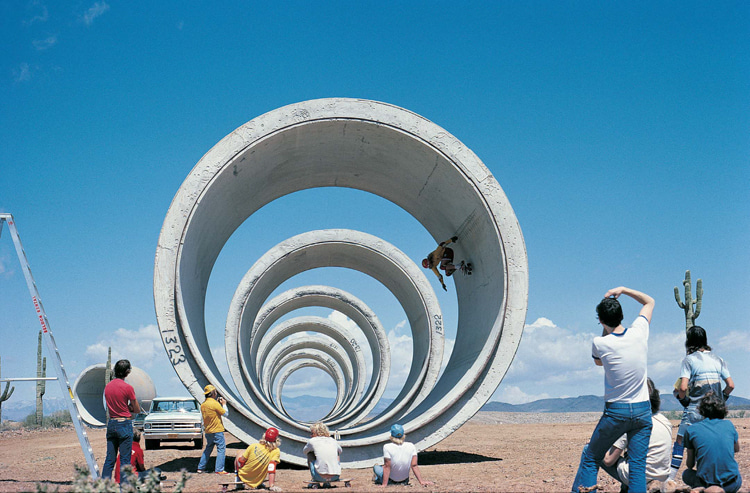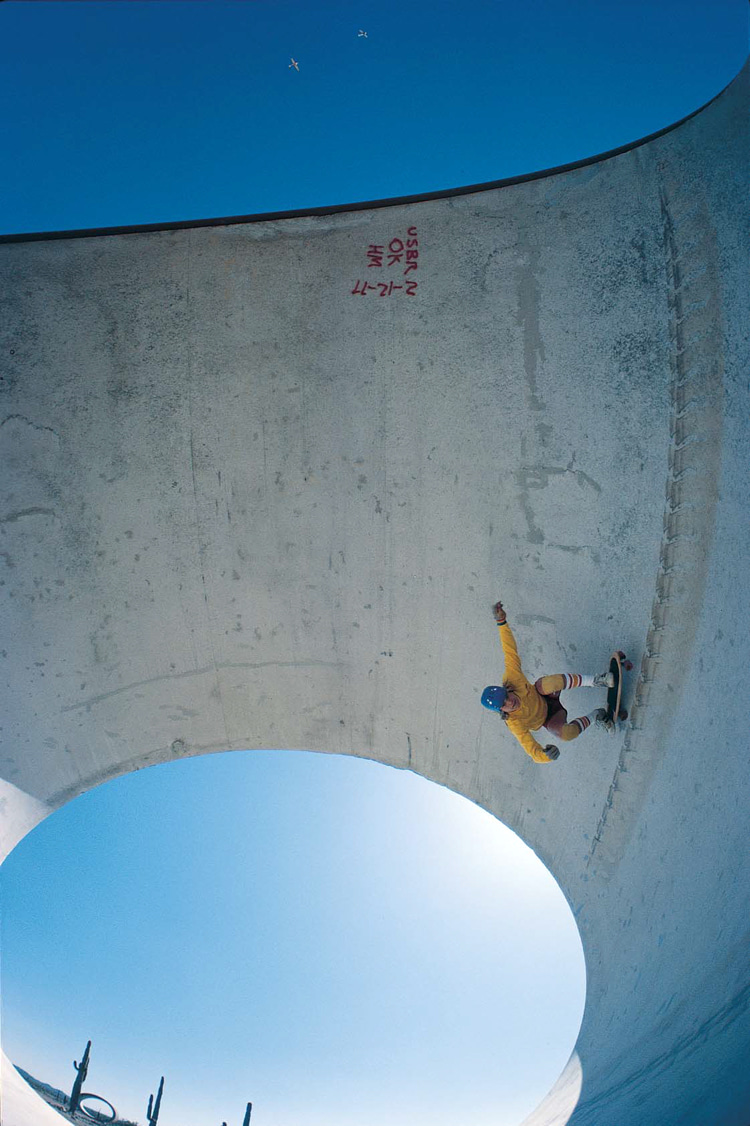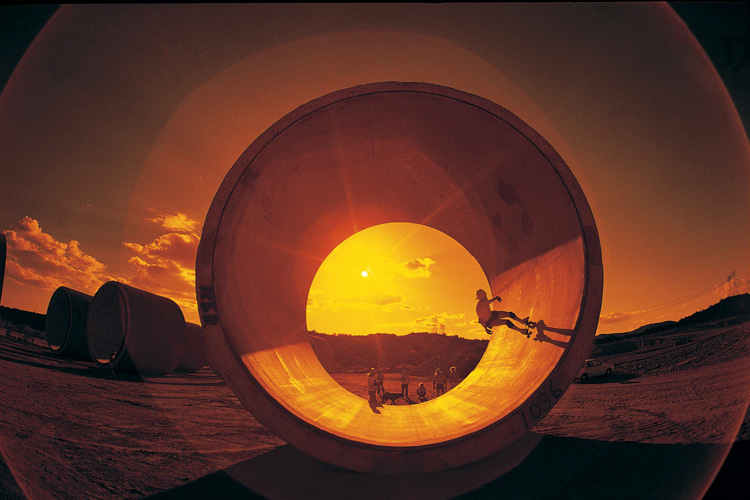The Arizona Pipes were one of the two most remarkable periods of time in my tenure as Editor of SkateBoarder Magazine.
The other, which I'll deal with later, was the first week of photography at the San Marcos pool.
The Arizona Pipes were in the in-construction phase of the Colorado-to-California water project, and as they were in the middle of the desert around Phoenix, there was virtually no security.
At the office, I received either a letter or phone call in 1977 from one of the locales, tipping me off to this photo-worthy opportunity.
As I was trying desperately to obtain pipe photos as Jim Cassimus did for the first non-Warren Bolster cover of SkateBoarder, I jumped at this.
Besides pipe photos, which I had shot on a much smaller scale in California, it was a time when we were just not receiving photos of action and quality from outside the Golden State.
I really wish I could remember the guy who turned me on to this to give him credit.

The Most Photogenic Skateboarding Background
Anyway, I chose various days' "stars," like Stacy Peralta, Gregg Weaver, Waldo Autry, Laura Thornhill (Caswell), Bob Biniak, and Tom Inouye, to make this trip.
We made about three trips in total, and after the first trip, it became difficult to keep it quiet (so that it wouldn't become too much of a "scene" and attract security).
Basically, there was no one there at all, and we wanted to keep it that way.
Looking back, it was kind of funny, as the five people invited for the second trip were all sworn, repeatedly, to secrecy.
I made a big deal about this and left the invitations to the last minute, yet still, after an afternoon skating at the Carlsbad Skate Park, the word did get out, and to my surprise, someone asked me, "when do you leave for the Desert Pipes?"
The pipes will remain in my memory as the most photogenic potential of anything I've ever done in skateboarding.
Pipes everywhere!
There were rows of unconnected pipes and connected pipes (with at least two nearly completed sections) and a seemingly endless array of esoteric photo opportunities.

Smooth Transitions
We started at the connected sections.
These started off running downhill at an even, speed-worthy pace as you rode from the light into pitch-blackness.
Very freaky.
As I personally wasn't into kick-turning on the vertical, I stuck with carving long, smooth turns into the dark, very surf-like.
I couldn't go very far since it got too dark to see anything!
The others did some of the same but stayed near the opening, kick-turning the vertical and actually way past vertical.
The transitions from pipe to pipe were extremely smooth in this first area. It would've been insane if we'd had lights - no telling how far we could've gone!
The other stretch of completed pipes would later prove to be less evenly connected, with spaces that could leave you to a rough disaster.
Then, it was off to the individual pipes, surrounded by cactus and in ready-made rows in different but close proximity.
These were so exoterically incredible that I was able to shoot more photos in one day than I'd ever shot. I now have a multitude of photos that have never run.
The sunlight was unreal! Clear blue skies.
Most of the skaters would gather around the particular pipe I was shooting, but others would skate another pipe behind.
One series of the laid-out pipes must've had seven in a row or more.
Only the locales were around watching - they'd never seen anything like this, and I hoped our group made the invitation worthwhile, as it was the turn-on of a lifetime!
I spent all of my time trying to capture everything, every angle I could come up with.
An Unforgettable Experience
Looking back, I think it deserved more space in the magazine than we gave it.
An article would've been in order as we had representatives of most of the hot areas we knew of in California - Los Angeles, San Diego, and Dogtown and all current influences that we knew of.
You need to remember that at the time, there were only three or four active skateboarding photographers and, every issue, people were to keep asking, "what can you do next to keep topping this issue?"
So much was happening that the sport/lifestyle was advancing in literally leaps and bounds. Photographically, there was to be more than enough creative activity for my creative needs.
By the time I quit the magazine in 1979 due to overwork and personal problems, we were able to fill the largest magazine to date - 196 pages - with no photos of my own and a huge future in the sport.
We always tried to cover everything: slalom, freestyle, pools, banks, ramps, and all kinds of other vertical and street skating.
I'm very still proud of this time of my life, in spite of literally falling apart from all the work and personal problems two years later.
When I quit, they hired two guys to replace me and still went out of business.
And these pipes remain the most popular skateboarding photos of mine, even outside of our own magazine.
Words by Michael Brooke | Skateboarder and Author of "The Concrete Wave: The History of Skateboarding"
